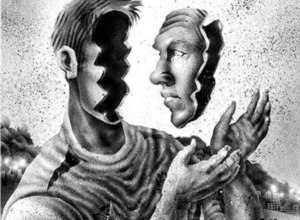
By Steve Beckow, November 14, 2022
(Golden Age of Gaia)
Here comes a detailed look at the constructed self that we fashion to present and manage our image, to look good and sound right.
The invitation is to come out from behind the image and be who we really are.
Download On the Constructed Self here: https://goldenageofgaia.com/wp-content/uploads/2022/11/On-the-Constructed-Self.pdf
Introduction to the Constructed Self
What is the “constructed self”?
It’s a construction in thought, preserved in memory, that we allow to define ourselves and influence or determine our response to matters.
The concept of a constructed self covers much the same territory as notions like personality, identity, self-concept, self-image, etc. The only difference is that I’m emphasizing that it’s something we ourselves construct and at times deconstruct and reconstruct.
It’s not a static phenomenon, but a dynamic. It changes as our thoughts decide. If we have a committed thought such as “I’m never going to do that again,” it alters the constructed self, removing an element of its construction or putting up a “No Access” sign.
We’re constantly altering our constructed self. And indeed we’re being asked to alter it by letting go of our negative ways of being that we’ve “sold” to ourselves and others and embracing the higher-dimensionally positive or divine qualities.
Let me focus for a moment on the “self” we construct.
It seems to me that a chord is struck whenever we focus on either the self, the Self, or the No-Self.
Anything that turns our attention to us is felt keenly. It’s as if someone is wanting to wake us up to the desirability of turning our attention inwards. Not in a lethargic way but in a very attentive way.
Krishnamurti once said that liberation came from observation of the ways of the self. I think he meant the small-s self. I hope this book helps with your observation.
Some elements of our constructed self are shared across our culture or subculture and others are not. An example of a culture-wide behavior pattern is the survival-oriented way we see ourselves.
As long as we operate within 3/4D, we tend to represent ourselves as separate-seeming selves competing for scarce resources with other separate-seeming selves. It’s up to us to ensure our own survival and it’s survival of the fittest.
In this environment, we feel a need to sell ourselves to others – or at least an image of ourselves, a mask we wear or a way we act – in order to win friends, influence people, and garner allies.
To do this, we construct a self – or rather a self-image – a view of ourselves, which we sell to others.
We represent ourselves in the best possible light. What we call “acceptance,” one could think of as “buying our act” or “not exposing our mask.”
Those who buy our act become our friends. Those who don’t are not.
I watch myself carve out an image of myself as generous. My father and grandfather had issues with money which I address by being the opposite. I’m busily crafting for myself the identity, mask, or constructed self of a generous person.
My hope is that you buy seeing me that way.
All of these actions take place within the Third and Fourth Dimensions. The constructed self is not a part of the higher dimensions.
It isn’t part because the love that’s felt there drowns out all thoughts of harm or conflict. We experience abundance, feel our oneness in love, and have none but harmonious thoughts.
What that means for us is that, if we want to experience the higher dimensions, we may want to drop our mask, self-image, or constructed self.
Any construction added to our unstructured Self is overburden, an obstacle to our realization of it that would later need to be removed.
The pure and innocent Self lies deeper than the level of consciousness of the constructed self. Way beneath it. (1)
Transparency, honesty, awareness – again, the divine qualities – are what will solve any discomfort we feel from dropping this way of being.
I hope these essays pinpoint for you what the constructed self is and how to recognize it. I hope they raise the subject to awareness and make it comprehensible.
And I hope they help you then let go of yours after experiencing it to your satisfaction. I hope they help me to let go of mine as well.
Or not. Everyone has free will.
But the constructed self will be up to awareness.
A centipede, if its hundred legs are raised to awareness, can no longer walk. It trips over itself.
We, when a behaviour pattern is raised to awareness, can no longer run it outside our awareness. It now must run within our awareness, which makes it ripe for alteration.
Footnotes follow
Download On the Constructed Self here: https://goldenageofgaia.com/wp-content/uploads/2022/11/On-the-Constructed-Self.pdf
Footnotes
(1) As I discovered at Xenia Sept. 18, 2018.
At Xenia Retreat Center, I dove deeply into my heart, in meditation, to find out what the origin was of the feeling of dismay I was experiencing. I thought I’d get to the original incident and experience it through to completion. Instead I went way past the level of the vasanas [the constructed self] and kept on going.
I finally reached what resembled a tunnel and at the end of it was the Light of the Self. And in the presence of the Self I felt innocent and pure.
I had penetrated through the hridayam, the heart aperture, into the open heart and down, down, down to “the seat of the soul.” So I can vouch for the fact that the seat of the soul is in the heart. That no longer sounds like a far-fetched notion to me, but something I’ve experienced and realized. (“The Heart is ‘the Seat of the Soul’,” December 17, 2018, at http://goldenageofgaia.com/2018/12/17/the-heart-is-the-seat-of-the-soul/.)